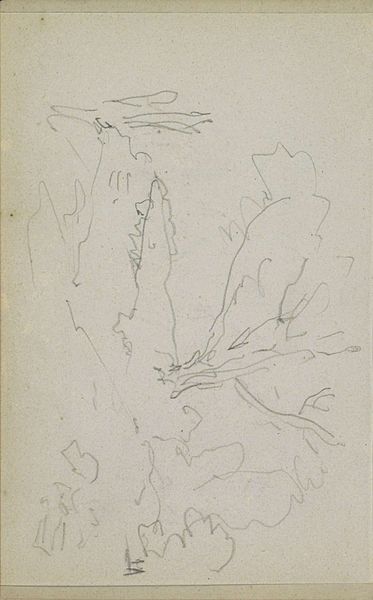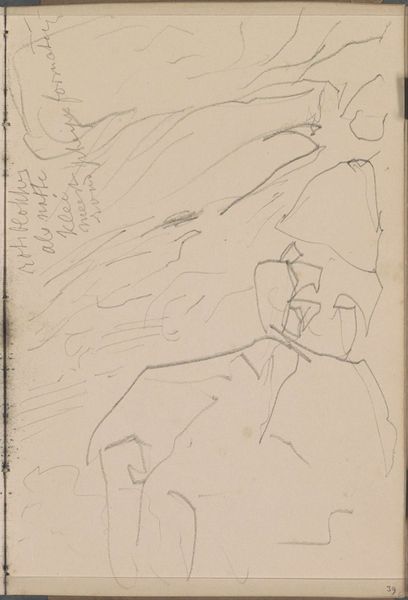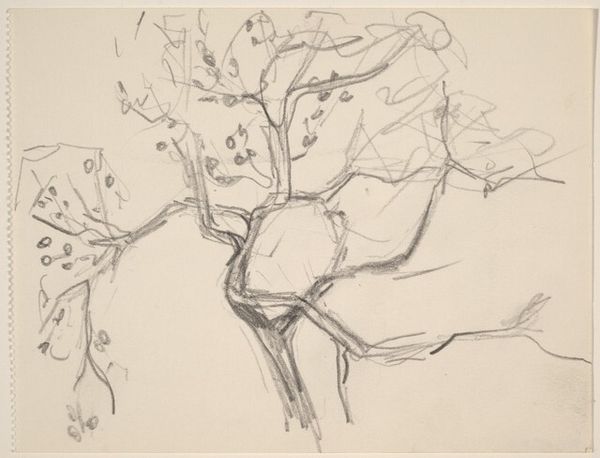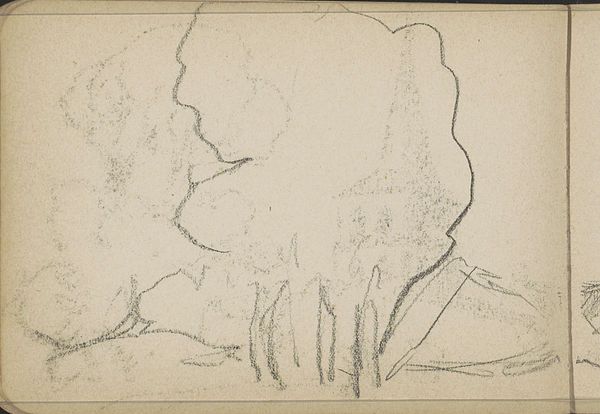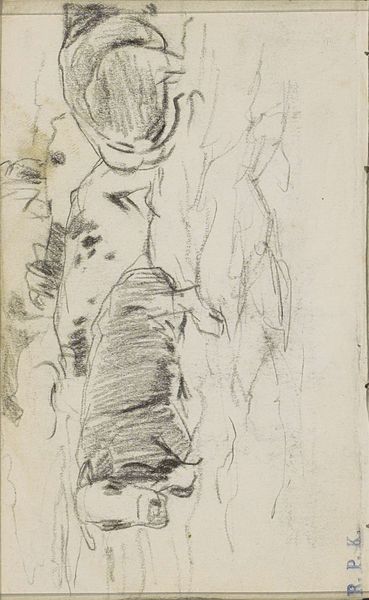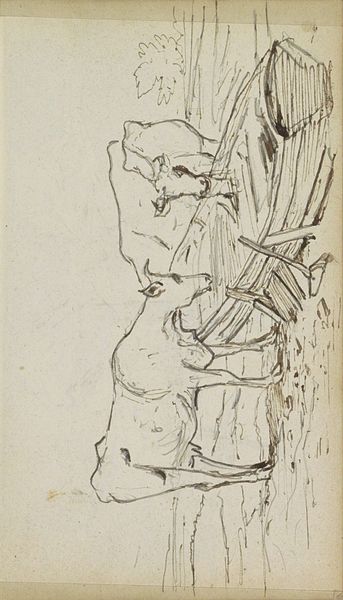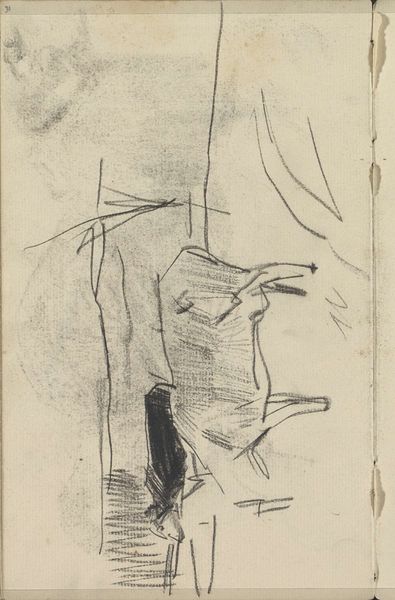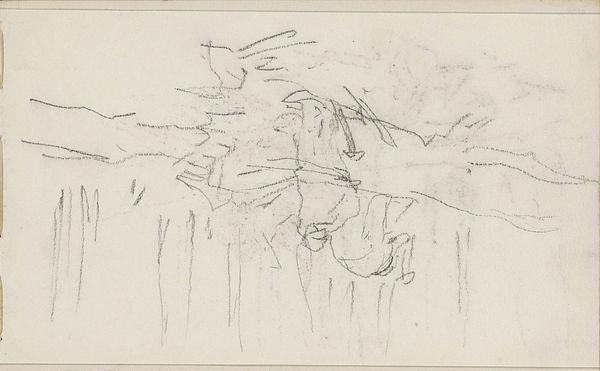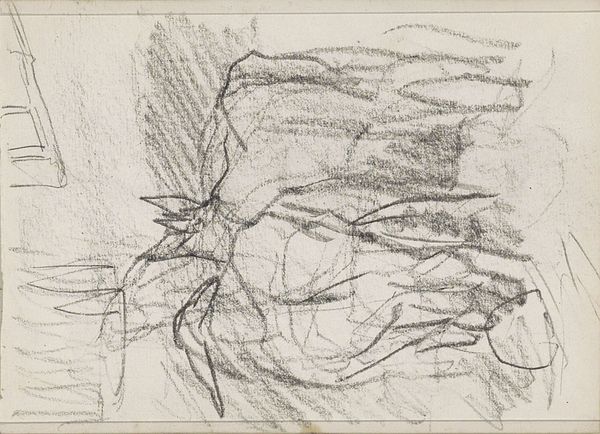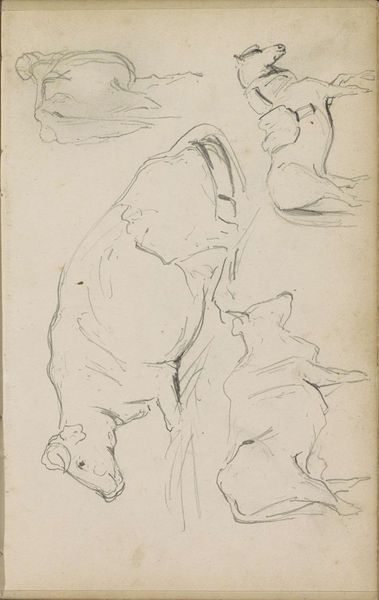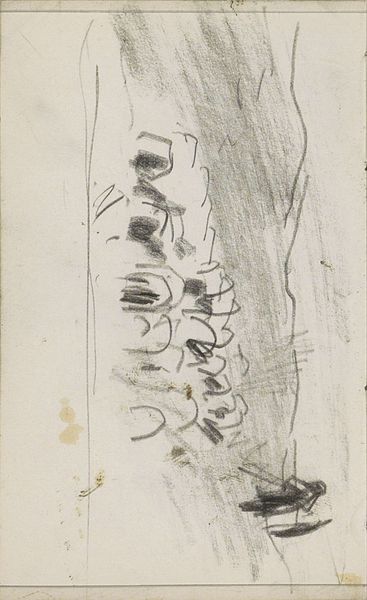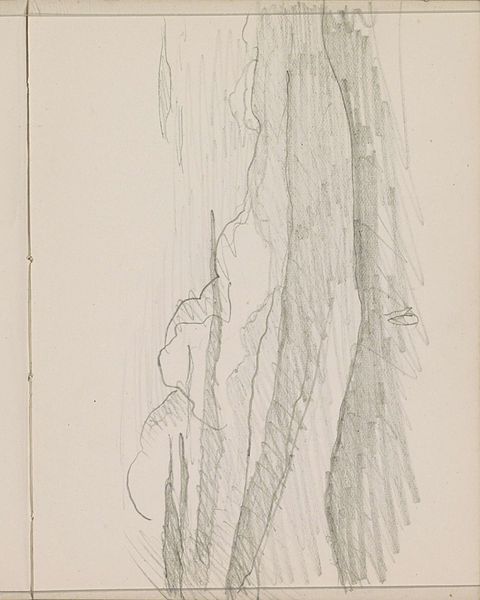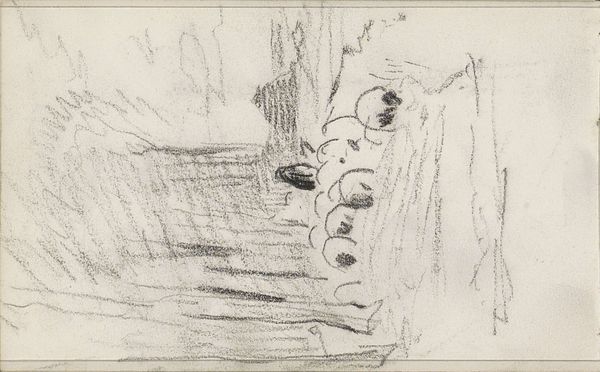
drawing, pencil
#
drawing
#
figuration
#
geometric
#
pencil
#
line
#
academic-art
Dimensions: height 182 mm, width 112 mm, height 335 mm, width 226 mm
Copyright: Rijks Museum: Open Domain
Editor: Here we have Gustave Joseph Chéret’s pencil drawing, "Vaas met figuren," created sometime between 1870 and 1894. It’s a delicate sketch of a vase adorned with figures, cherubs perhaps? I find the linework so light and airy, yet the vase form is quite sturdy. How do you interpret this work, considering its historical context? Curator: This drawing provides a fascinating glimpse into the artistic training of the period, specifically within academic art circles. We see Cheret working with traditional forms and subject matter, drawing inspiration from classical antiquity that was a core tenet of art academies. Consider the public role art was meant to play: conveying moral virtue, celebrating history and elevating the viewer. Editor: So the cherubs tie into that aim somehow? They don't feel particularly revolutionary. Curator: Exactly. Think about what these idealized figures represent within 19th-century social structures. They invoke ideas of innocence, beauty, and idealized forms. Their presence on a vase, intended for display, speaks to the values being promoted and celebrated within domestic settings of the bourgeoisie. Is this a finished piece, or perhaps a preparatory sketch for a larger project? Editor: It feels more like a study, maybe something for a painting he never made? Or even a poster perhaps? Curator: Possibly, which raises a further point, do you see how the sketch emphasizes line over form? This choice is intriguing as it is quite atypical for Academic art. This could potentially align the sketch with Chéret’s poster work. It seems to speak of shifting aesthetic values and the blending of high and low art forms within the evolving art market. Editor: That’s a fantastic point! I see the hints of Cheret’s posters in those strong lines now. Curator: Precisely, the politics of imagery are everywhere if we have the eyes to see it. It goes to show how even a seemingly simple sketch can be loaded with cultural significance when examined through a historical lens. Editor: Absolutely, I will definitely keep that in mind moving forward. Thank you.
Comments
No comments
Be the first to comment and join the conversation on the ultimate creative platform.
